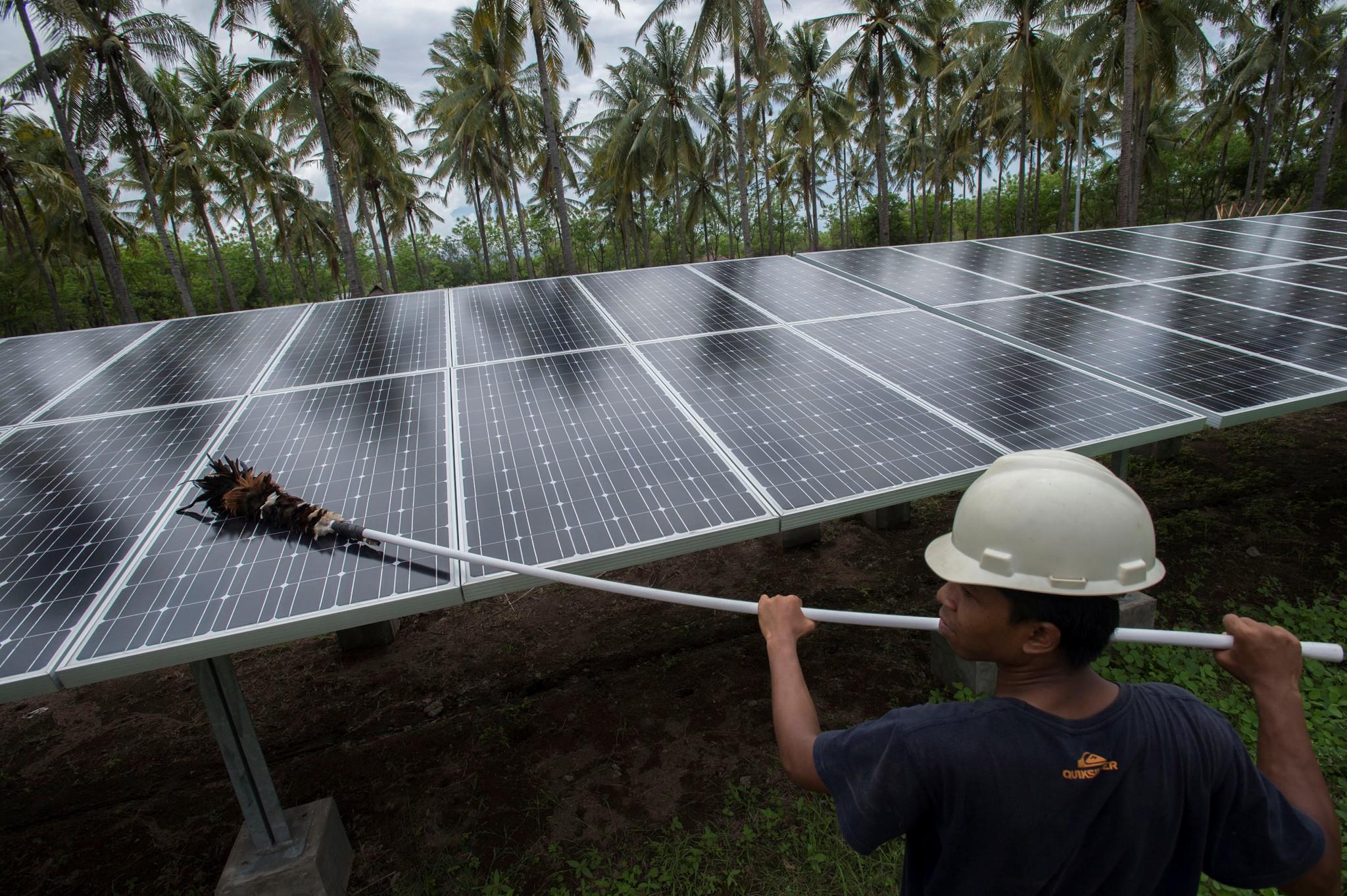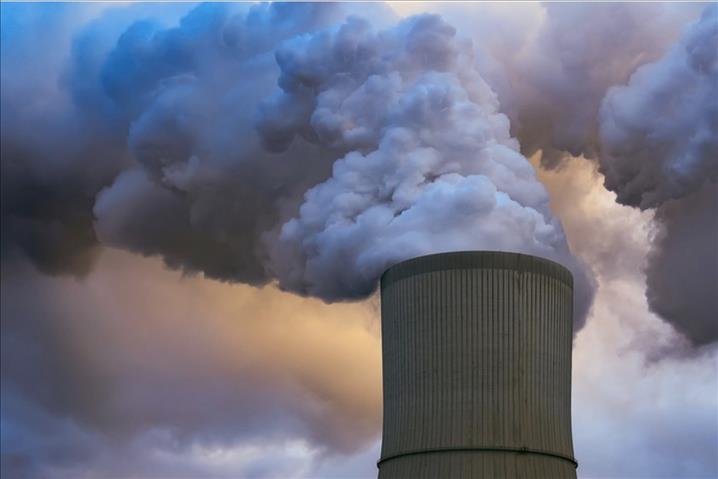Indonesia edging towards the nuclear option
(MENAFN- Asia Times) JAKARTA – Nuclear is a notable absentee from the list of renewables in Indonesian power utility Perusahaan Listrik Negara's (PLN) latest plan for the next decade, but flip the page to the country's ambitious 2060 zero-carbon scenario and it figures prominently after 2035.
For nuclear exponent Bob Effendi, the door is now irrevocably open.“The political decision has been made with no fanfare,” he asserts, pointing to the pending New and Renewable Energy Bill, where the“new” stands for nuclear.“It can't be reversed (by any future administration).”
The only question, he says, is when it will happen, with Ministry of Mines and Energy officials reportedly divided between those who favor nuclear power sooner (2030-35) and those who prefer it later (2040-45).
Seven articles in the new legislation deal with nuclear power, including provisions for a policy-making Nuclear Power Plant Advisory Council and also for the government establishing a site to sustainably store radioactive waste.
PLN and Effendi's US-based ThorCon International Pte Ltd have already got the go-ahead to build an experimental 50MW thorium-powered molten salt reactor on Bangka Island, south of Singapore, which is expected to be operational by 2028.
At this early point, PLN plans call for the first nuclear plant to start operating in 2040, the same year the utility wants to begin decommissioning its super-critical coal plants and applying carbon, capture, usage and storage (CCUS) technology to the remaining stations.
Effendi believes nuclear can make a timely contribution to meeting emission targets with the revival of the molten salt reactor, a technology that was abandoned in the 1970s, but has now taken on new relevance, especially because it is immune to meltdowns.
A 500MW prototype of what he calls the“android of energy,” built in parts in a South Korean shipyard and transported directly to a prepared site, would cost about US$1.2 billion. But he claims future plants would carry a less expensive price tag.
While natural gas will play the major role in filling the gap between coal and renewables, nuclear is shaping as another viable option given widespread skepticism over how quickly solar, wind and even geothermal can be brought on stream – and in what quantity.

A PT Perusahaan Listrik Negara (PLN) employee cleans the surface of solar panels at a solar power generation plant in Gili Meno island. Photo: Antara Foto / Widodo S. Jusuf
Indonesia is likely to get back on a much stronger growth path in 2022 when the Joko Widodo government hopes the investor-friendly 2019 Job Creation Omnibus Law will kick in and attract large amounts of post-pandemic floating capital.
That will mean higher power demand. With PLN customers already sopping up what had become a persistent oversupply on the 40,000MW Java-Bali grid – more than half of nationwide capacity – demand is now expected to multiply exponentially as Indonesia returns to 5-6% growth.
Analysts say if Indonesia hopes to achieve prosperity status by 2050, or an 0.8 grade on the Human Development Index (HDI), electricity consumption will have to increase from the current 1,084 to 4,000-kilowatt-hours (kWh) per capita a year.
While Indonesia had an HDI value in 2020 of 0.75, compared to Malaysia (0.81), Thailand (0.77) and Vietnam (0.58), that figure sinks to 0.59 when the United Nations Development Programme's (UNDP) inequality factor (IHDI) is taken into account.
At the same time, power consumption is growing at a snail-pace 30kWh a year, far adrift of Thailand and Vietnam, whose annual consumption rates are 3,400kWh and 2,000kWh respectively. Tiny Singapore, which gets most of its natural gas from Indonesia, comes in at 8,8345kWh.
To meet the HDI target, Indonesia will need an additional 15,000MW a year – three times more than now and during a period when the government wants to begin decommissioning coal plants and looking for a new energy source to replace them.
PLN plans to retire 10,000MW of old fossil fuel plants between 2030 and 2040, then remove 10,000MW of super-critical stations over the following five years. The remaining 29,000MW of ultra-super-critical plants will be scrapped in two stages by 2055.
Beyond 2040, Indonesia plans to install CCUS units to suck emissions from the coal plants still in operation. But experts say the cost, at $30 to $90 per tonne of Co2, is prohibitive and the dangers of underground storage have still to be properly assessed.
Like New Zealand and Austria, some countries are strong opponents of including nuclear generation as a clean alternative to hydrocarbons. The World Bank has said it will not grant the industry multilateral finance assistance.
But many nations have pointed to nuclear's low-carbon footprint, as well as the way the industry has been modernizing with the impending rollout of modular molten salt and other Generation IV reactors that offer greater safety.
According to the World Nuclear Association (WNA), about 30 emerging economies are currently considering or planning nuclear programs, most of them with already long-established nuclear power infrastructure.
None of the five major Association of Southeast Asian (ASEAN) nations have any immediate plans to take the nuclear option, but neither do they rule it out as the global pressure mounts to convert to renewable energy.
Only the Philippines has a nuclear power station, the 620MW Bataan plant – but as a potential solution to the 1973 oil crisis. It never went into operation, and despite talk of reviving the project, the outdated design rules against it.

The Philippines Baatan plant never went into operation. Photo: Facebook
Thailand and Malaysia periodically review plans to add nuclear to their energy portfolios, and Singapore says it continues to monitor advances in safer reactors.
Meanwhile, disaster-prone Indonesia remains the region's unlikely nuclear point-man, despite renewed fears stemming from the Fukushima Daiichi meltdown, caused by an earthquake and tsunami that struck Japan's northeast coast in 2011.
Given the checkered performance of Indonesia's regulatory agencies, nervous neighbors like Singapore and Australia – and a good number of Indonesians – ask why a nuclear watchdog would be any different.
Only last year, the Nuclear Energy Regulatory Agency (Bapeten) detected high levels of radioactive contamination on land only three kilometers from the National Atomic Energy Agency's (BATAN) research reactor in South Jakarta.
Authorities said radioactive isotope cesium-137 was found in the form of shards measured at 680 millisieverts an hour, the same level of radiation workers were exposed to when they responded to the Fukushima emergency.
But Bapeten has yet to issue a report on the incident or confirm the source of the contamination, which predictably led to new calls from environmentalists for Indonesia to refrain from pursuing its nuclear ambitions.
Four years earlier, a small explosion at a BATAN laboratory came at the same time as protests against a planned 4,000MW nuclear power plant on Central Java's Mulia Peninsula. The two events were not said to be related.
Indonesia has toyed with nuclear technology since BATAN was established in 1954, starting with a 2MW research reactor in Bandung and then proceeding to the 30MW Serpong reactor, commissioned in 1987.
It has since added a small 100kW facility at Jogjakarta, Central Java, making Indonesia and its experienced scientists technically better prepared than its neighbors to shift into the nuclear age.
It also has 70,000 tonnes of uranium reserves, concentrated in West Kalimantan, and 170,000 tonnes of thorium, much of it locked away among the rare earth minerals in Bangka Belitung's tin mining waste south of Singapore.
ThorCon is one of six companies in the US and Europe developing different designs of a molten salt reactor, which is not only immune from meltdown, but is much cheaper and produces less toxic waste.

Thorium is a weakly radioactive, silvery metal that occurs naturally in rocks and is currently rarely used industrially. Credit: Handout
China is also testing a prototype in the Gobi Desert looking for another viable alternative to help achieve its climate goals; nuclear currently makes up 5% of China's energy mix, with nuclear power generation increasing by 4.7% last year.
The technology was mothballed in the late 1960s because uranium-235 was always seen as the natural candidate for nuclear reactors. As a result, the market didn't look any further – until now, when the fuel needs wider public acceptance if it is to take its place as an energy-intensive option.
Other Generation IV reactors still use uranium, but the industry says they are all specifically designed to improve safety, sustainability, efficiency and cost, employing a newly-developed closed fuel cycle.
While nuclear is considered clean and green, second only to hydropower, it is classified as sustainable rather than renewable energy because it uses uranium. The thorium used in molten salt reactors puts it in the same category.
Fukushima may have been the worst nuclear disaster since the 1986 Chernobyl meltdown and a powerful tool in the hands of anti-nuclear activists, but Effendi claims it also had a reverse effect in creating greater interest in molten salt reactors.
He and other advocates argue that the threat of earthquakes and volcanoes to nuclear plants is not the issue by itself. Far more crucial, they say, is the Peak Ground Acceleration (PGA) in a particular area, or how much the ground moves during a quake.
According to a multi-colored PGA map of Indonesia, large swathes of the archipelago show a recorded G-force measurement of below 0.4%, the acceptable safety standard for a nuclear station. Effendi's prediction, as unlikely as it sounds now: 100 nuclear plants across Indonesia by 2060.

Legal Disclaimer:
MENAFN provides the
information “as is” without warranty of any kind. We do not accept
any responsibility or liability for the accuracy, content, images,
videos, licenses, completeness, legality, or reliability of the information
contained in this article. If you have any complaints or copyright
issues related to this article, kindly contact the provider above.
Most popular stories
Market Research

- Brazil Edtech Market Size, Share, Trends, And Forecast 2025-2033
- Vietnam Vegan Food Market Size, Share, Trends And Report 2025-2033
- Cryptogames Introduces Platform Enhancements Including Affiliate Program Changes
- Accounting And Bookkeeping Service Business Plan 2025: How To Start, Operate, And Grow
- USDT0 And Xaut0 Are Now Live On Polygon
- Global Open Banking Market 20252033: Services, Deployment & Distribution Trends






















Comments
No comment